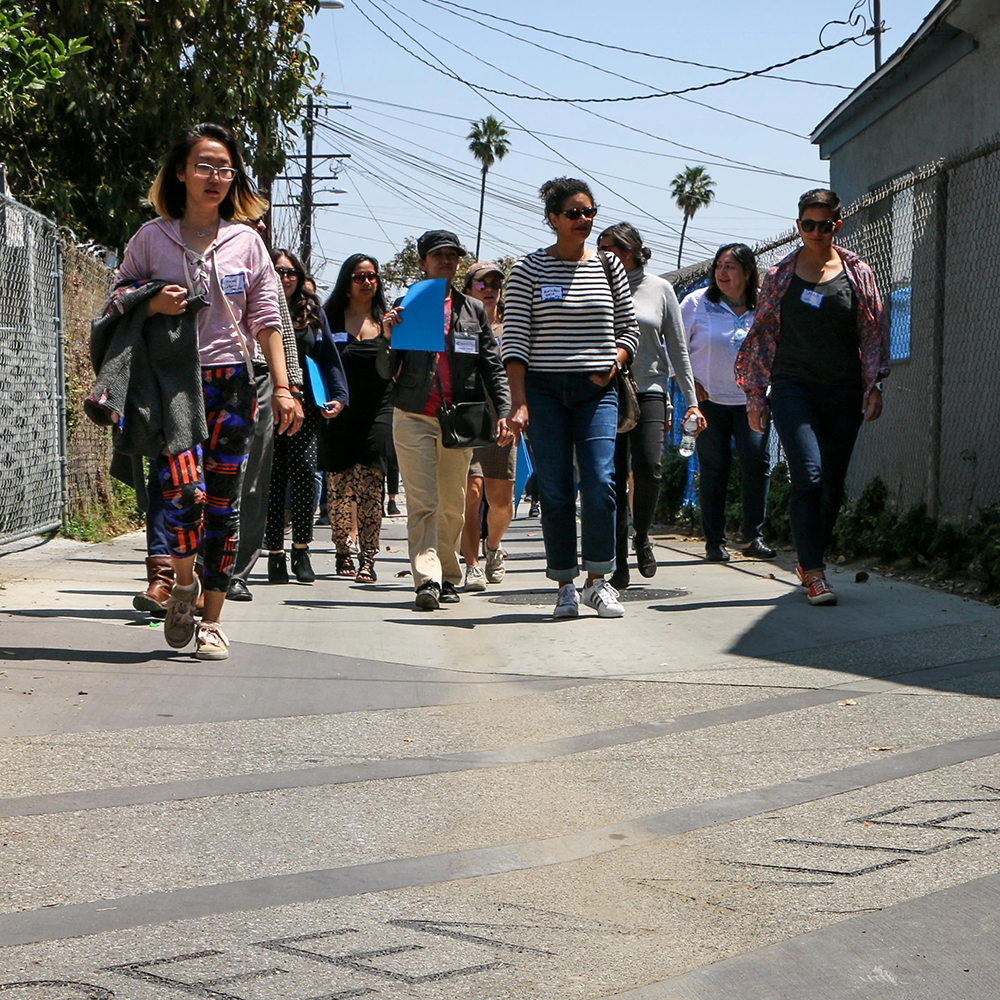Water 101
Know the Flow
Invite a Know the Flow educator to your office, meeting, faith gathering or class. You should know where your water comes from! You can support a sustainable flow – once you Know the Flow! (Presented by Heal the Bay)
WaterTalks: Water Education Across LA County
Learn about how TreePeople works with the community to conserve and protect our water!
Stormwater
The Opportunity
A Time of Opportunity
The Prevention Institute takes a dive into the water issues facing over-burdened and underserved communities, and the opportunity to address them through a funding measure.
A New Vision for Water Management in the Los Angeles Region
TreePeople explores how agencies can create new opportunities by aligning diverse infrastructure goals, investments and programs.
Water Quality
Water Report Card for Los Angeles County
With this 2019 Sustainable LA Grand Challenge Water Report Card for Los Angeles County, UCLA provides an in-depth look at the region’s efforts to move toward a more resilient local water supply.
LA County Stormwater Report
Heal the Bay’s groundbreaking new Stormwater Report examines progress, or lack thereof, in stormwater pollution reduction efforts in LA County between 2012 and 2018.
LA Stormwater Partners
Municipalities share progress and updates on collaborative stormwater capture work that will keep LA watersheds healthy and clean.
Water Supply
The Untapped Potential of CA’s Water Supply
The Pacific Institute examines the water supply potential from three priority opportunities: improved efficiency in water use, reuse and recycling of water, and increased capture of local rain water.
Rain to the Rescue
TreePeople and NRDC examine two efforts that show how stormwater capture can provide effective solutions to extreme weather cycles and a secure water future – and how governments, agencies and residents can take action.
Community Investments
Liquid Assets
LAANE develops a model in this Report to project job creation and other economic benefits of stormwater capture projects.
Creating Good, Green Jobs
Construction jobs and O&M jobs have the greatest potential to incorporate career pathways into program design, benefitting residents, improving regional equity, and building ladders to the middle class.
The Power of Schools
TreePeople explores opportunities to increase the region’s water security while creating a pathway for major public investment in greening and cooling school campuses for Los Angeles’ children.
Equity
Los Angeles Countywide Parks Needs Assessment
LA County only has 3.3 acres of greenspace per 1,000 residents – well below the national average for major metropolises. The number of children without access to a park in Greater Los Angeles is over 600,000.
Los Angeles Countywide Parks Needs Assessment Plus (PNA+)
The Parks Needs Assessment Plus (PNA+) is a national model for park equity and planning that has been shaped by communities.
Human Right to Water
In 2012, California became the first state to recognize that “every human being has the right to safe, clean, affordable, and accessible water.”
LA County’s Safe Clean Water Program (SCWP)
SCWP General Information
Safe Clean Water Program (SCWP)
The Safe, Clean Water Program provides local, dedicated funding to increase our local water supply, improve water quality, and protect public health. Visit LA County’s SCWP home page to learn more.
SCWP Public Education and Community Engagement Programs
The SCWP District Education Program will include public education and community engagement programs, local workforce job training, and school education and curriculum programs.
SCWP Ordinance and Documents
Check out the documents and Board of Supervisors actions that formed the SCWP.
SCWP Biennial Review
Draft Biennial Progress Report
View the Safe Clean Water Program Draft Biennial Progress Report for public review (comments due January 8, 2024)
Watershed Area Regional Program Progress (WARPP) Reports
View annual reports summarizing progress in each Watershed Area – funded projects, scientific studies, and project concepts.
The SCWP Metrics and Monitoring Study (MMS)
The MMS is designed to develop program methods, metrics and monitoring criteria to inform tracking, planning, reporting and decision making within specific areas of the SCWP.
Changing the Course?
In this report, LA Waterkeeper explores what’s worked, what hasn’t, and what’s next for the Safe Clean Water Program
Equity in Stormwater Investments
UCLA and Stantec measure community engagement and disadvantaged community benefits for equitable impact in the Safe Clean Water Program
#OurWaterOurVoice
SCOPE explores the spectrum of community engagement that runs from marginalization to community ownership.
The Accelerate Resistance LA SCWP Working Group Recommendations
This report looks at the benefits and tradeoffs in the SCWP, as well as metrics for balanced watershed projects.
OWLA Recommendations
OWLA offers recommendations to transform the SCWP into a visionary
and proactive investment program.
Projects we advocate for
SCWP Project Portal
In the first four years, OWLA supported 31 of the 126 Regional Projects that have been funded. But our advocacy does not stop at what we support – we also advocate to make good projects better. View LA County’s SCWP map to stay informed on all SCWP projects.
SCWP Projects Supported by OWLA
OWLA supports nature-based and multi-benefit projects that capture and use stormwater while investing in communities. See our list of SCWP projects that fit the bill.
Existing Projects We Would Like to See More Of
Examples of Recreational, Residential, Educational, and Industrial projects that you can visit today!
